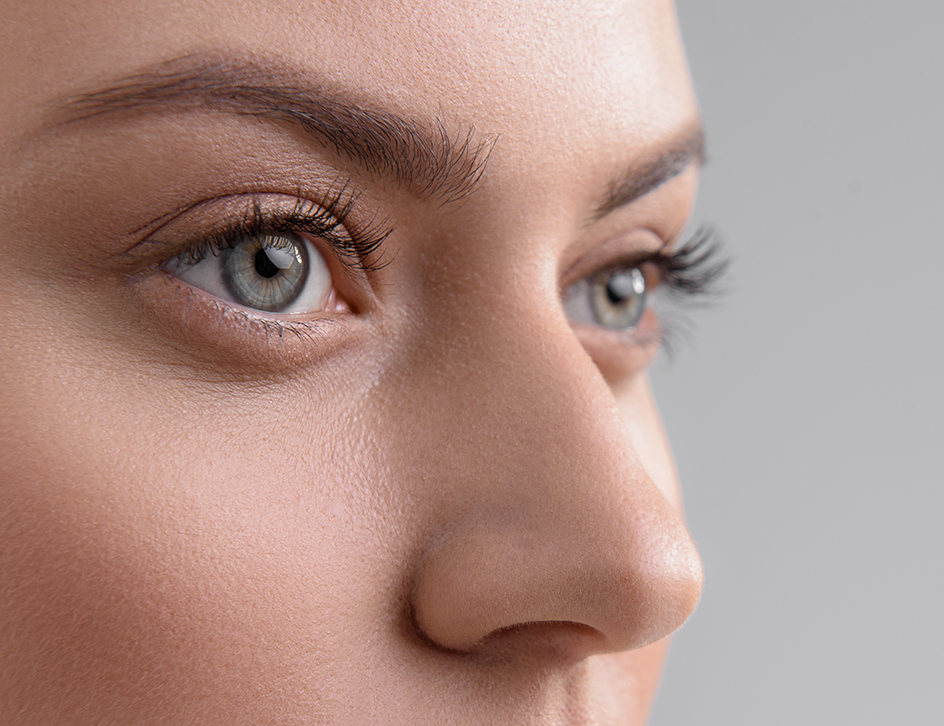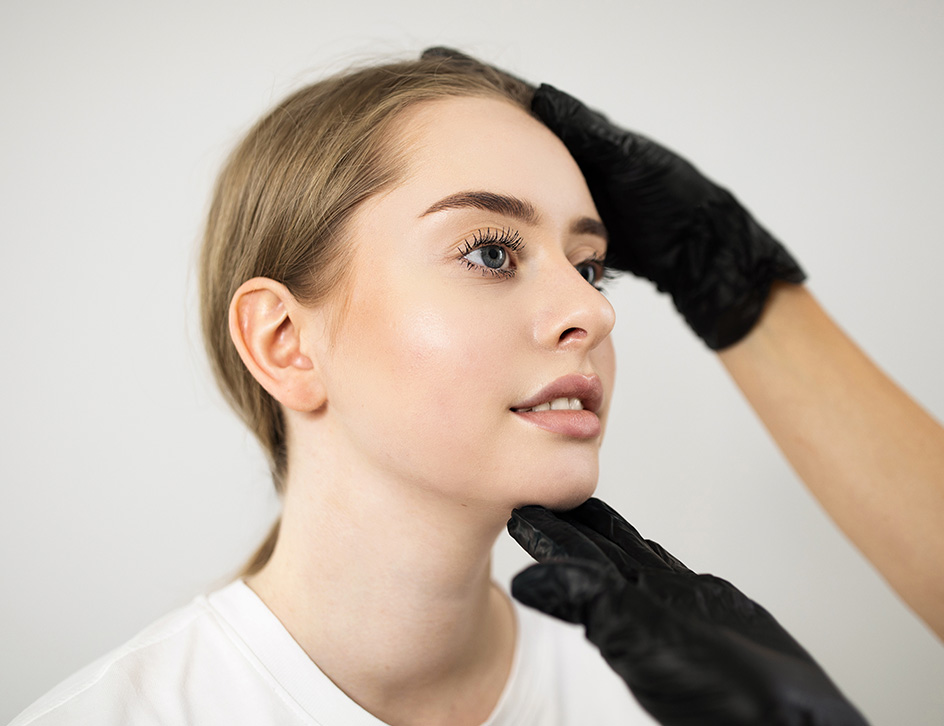In 2022, over 2200 rhinoplasty procedures were performed in the United Kingdom (UK). These nose surgery procedures can be performed for a variety of different reasons, such as amplifying one’s appearance, correcting nose injuries, revision due to previous surgery, or for medical purposes.
It’s essential for you to know that certain individuals will suffer from conditions that require the help of an expert plastic surgeon. If suffering from such conditions is prolonged, it can lead to severe problems, such as breathing difficulties. A dorsal hump is one such example of these conditions.
In this article, we’ll look at what a dorsal lump is, the causes behind it, solutions, and more. Remember, that prior to the option for Rhinoplasty in London, you should thoroughly understand your condition, options, and possible outcomes so that you can make the best decision.

What is a dorsal hump?
A dorsal hump is basically an irregularity of the nasal bones where both the bone and cartilage are affected. This medical condition is also commonly referred to as a nose bump. The dorsal hump begins near the upper region of the nose, near one’s eyes, and around the nasal tip.
Before we move on, know that this condition is something you may be born with or something you could experience later in life due to injury or trauma. The dorsal hump varies among people and can be of different sizes. It’s entirely possible that some individuals may even have a bump on one side of their nose and not the other.
Such a condition is a form of dorsal humps where a bone sticks out to one side of the nose. When compared to regular dorsal hump, such a condition can be more conspicuous from the side profile. Many individuals who have dorsal humps tend to seek rhinoplasty surgery options.
While for some, a dorsal hump reduction can be driven by the need to improve their aesthetics and achieve a more symmetrical facial appearance. Dorsal humps, based on underlying causes, may lead to breathing difficulties, and in such cases pursuing rhinoplasty surgery options might become a necessity.

What are the causes of dorsal humps?
When pursuing surgery for dorsal hump removal, it’s better to first understand what causes the conditions. Dorsal humps are basically irregularities in the cartilage or other nasal bones. A dorsal hump can be caused by different factors such as genetics, trauma or injury, and other medical conditions. Let’s look at them in detail.
Genetic dorsal humps
An individual’s genes are one of the most common causes of them getting a dorsal hump. A dorsal hump might not be evident during early childhood years, however, tend to become more visible during puberty. Know that the chances of someone developing dorsal humps are higher if one or both of their parents have the same condition.
Medical condition
Dorsal humps, in addition to being hereditary, can also occur due to several underlying medical conditions. These conditions include:
1. Allergies – those who suffer from chronic allergies are likely to experience frequent swelling within the nasal tissue. Such swelling, although minor at first, can lead to a nasal hump.
2. Nasal polyps – these are growth forms that occur within the nasal bridge or lining and can cause bumps to appear. Know that these polyps can be caused by respiratory conditions or other allergies.
3. Deviated septum – this is a medical condition where the cartilage that separates both nostrils is not properly aligned. A deviated septum can cause breathing problems and lead to dorsal hump formation. In severe cases, consulting with expert plastic surgeons and evaluating rhinoplasty surgery options for you is necessary.
Before you proceed with a dorsal hump surgery, know that if your dorsal humps are a result of an underlying medical condition, you do have options. For instance, treating that condition may help reduce the appearance of dorsal humps on the bridge of the nose.
Injury or Trauma
Dorsal humps can also be formed due to physical injuries to the bridge of the nose, which damage the cartilage. However, this is something that’s common in children since their noses are still developing and are soft. Dorsal humps that occur due to surgery or trauma can be corrected via rhinoplasty surgery options.

What are some dorsal hump nose treatment options?
There are both non-surgical and surgical options available for those who want dorsal hump removal. Before we continue, know that what is suitable for you will depend on your individual circumstances. As far as a surgical procedure is concerned, both an open rhinoplasty surgery and a closed rhinoplasty surgery can be used.
However, in cases where the dorsal hump is relatively small, a non-surgical procedure can be better for you. Non-surgical rhinoplasty options for dorsal hump correction include the use of dermal fillers. Dermal fillers are injected into the nose to even out any bumps that exist. This procedure is commonly referred to as a liquid rhinoplasty.
Before you proceed with such an option, you must know that these fillers are a gel-like liquid and have to be injected into the nose on a continuous basis after a few months. That said, nose filler doesn’t necessarily serve as a permanent removal option for dorsal humps. However, they can be used to temporarily minimise cosmetic differences caused by the condition.

What is the surgical procedure for dorsal hump removal?
To fix irregularities in the nasal bridge caused due to a dorsal hump, both an open rhinoplasty and a closed rhinoplasty can be pursued. When you come for a dorsal hump treatment or any other nose surgery options, you have to go through a pre-operation process.
Dorsal hump pre-operation process
The pre-operation with Mr. Golchin consists of three phases: consultation, medical review, and examination. During the initial consultation, you will be required to provide details about concerns you have related to your appearance or any symptoms you might be experiencing. After this, digital photographs are taken and analysed.
It’s important for you to know that the underlying aim of this process is to determine realistic treatment options and results for your reconstructive surgery procedure. As part of your consult, your medical history will be reviewed. The aim of the medical review is to determine whether nose surgery is a feasible option for you.
In addition, factors such as the thickness of your nose and the structure may also be examined as they can affect technical considerations. As part of the pre-operation, you might be asked to visit your general physician for any blood or X-ray work that may be required. Furthermore, you will:
● Be provided with a detailed list of medications to avoid prior to your dorsal hump procedure.
● Be given prescriptions you need to take and instructions you need to follow before the surgery begins.
Dorsal hump cosmetic surgery options
The surgical process for the dorsal hump consists of different aspects. The exact procedure used in surgery may vary from person to person. Know that such a surgical process can also be combined with other cosmetic options for other facial features. Let’s go over the general aspects of a dorsal hump removal procedure so you may have a better understanding.
Receiving anaesthesia
Before you undergo the procedure, you’re likely to be given general anaesthesia. However, in some cases, the nose bridge and facial plastic surgeon may decide to give local anaesthesia combined with intravenous (IV) sedation. The actual surgery begins once you’re fully sedated. Depending on your nasal structure and desired results, the surgeon may perform an open or closed rhinoplasty procedure.

Open rhinoplasty procedure
During an open procedure, a small incision is placed under the nasal passage or nostrils. The incision gives Mr Golchin better access to the underlying structure of a person’s nose bridge, allowing him to correct prominent bumps on the nose.
If you’re opting for visible scarring, know that this procedure leads to visible scarring. However, their visibility tends to fade after several months. Know that Mr. Golchin is an experienced surgeon who only uses an open approach in rare cases where potential complications with the structure of the nose are evident.
Closed rhinoplasty procedure
Mr. Golchin prefers to use closed rhinoplasty techniques for nasal dorsum surgery as it gives more delicate control over the final shape. In addition, this approach also ensures that no visible scars appear after the nose job is complete. As part of the surgical rhinoplasty procedure, small incisions are made under the nostrils or inside the nose.
After making the incisions Mr. Golchin separates the skin from the tissue using specialised surgical equipment. Once separated, he begins to sculpt the upper lateral cartilages to fix the dorsal bump and achieve the desired results. However, know that the extent of fixing that can actually be done depends on different factors such as:
● Nasal anatomy
● Breathing difficulties
● Other medical or cosmetic surgery requirements.
Rebuilding and plastering
During such a process, cartilage grafts may be used to increase the strength of the nose. It’s possible that after the hump in the nose is removed, some patients may require rebuilding of the nasal bridge.
In such cases, the patient’s own bone and cartilage may be used, or the surgeon may opt for foreign material. It’s important to understand that the main risk of using foreign materials is rejection from the body or infection. However, such materials have been modified over the years, and the risk of complications is much lower.
Mr Golchin, prior to using foreign materials, will discuss all possible options along with their pros and cons with you and ensure that only the best possible option is used. Once the dorsal humps are removed, and the procedure is complete, he applies a plaster which helps protect and maintain the new shape of your nose.
In addition, if your procedure requires straightening of the deviated septum, he may apply plaster inside your nose.

How long does it take to recover from a dorsal hump rhinoplasty?
The recovery duration for a surgical rhinoplasty is something that varies from person to person. However, for most patients, it may take around two weeks. It’s important to remember that, during this time, common symptoms like bruising or swelling around the eyes or nose may occur.
You may experience some other symptoms, like a stuffy nose or difficulty in breathing. In addition, you should also try to avoid severe physical activities for a duration of up to 6 weeks. Lastly, remember that after a period of six to twelve months, the shape of your nose may change slightly, but such changes won’t be noticeable.

Is it possible for a dorsal hump to grow back?
Getting a dorsal hump correction nose job is a permanent solution, and such a prominent bump can not grow back. However, those who are concerned with the overall appearance should know that they may be likely to develop calluses in places where bone and cartilage were removed.
These calluses can bear a resemblance to a bump. In addition, some people experience swelling or inflammation in the area where the bump was removed. However, it’s important to understand that both these things do not mean that the nasal bump is growing back and the swelling will usually go away within a week or two.

Final Thoughts
Dorsal humps are irregularities within the structure of the nose. Such irregularities are not in line with other facial features like the upper lip, jaws, and eyes. Given this, they can be seen from a side-on or frontal view and are of significant concern for cosmetic purposes.
In addition, such humps that are caused due to underlying medical conditions can cause breathing problems and a medical procedure in such cases is necessary. Dorsal humps can be removed using both surgical and non-surgical procedures.
However, this varies among people and is based on multiple factors. Nose structure, medical history, and result expectations are common examples. Get in touch now and learn more about which options are right for you!

RHINOPLASTY
Useful Information:
Crooked Nose Rhinoplasty: A Comprehensive Guide | Do you need a rhinoplasty nose bridge surgery? | Dorsal Hump Rhinoplasty In London: Here’s What You Need To Know | Understanding rhinoplasty as a means of treating a Big Nose: What to expect | Unlock facial harmony with our bulbous nose rhinoplasty | Reclaim your beauty and breathe easy with our rhinoplasty for broken nose
I was very nervous about getting lip fillers for years, but I got recommended to Mr Golchin and I cannot recommend him enough! He made me feel at ease about the treatment and gave me exactly what I wanted! It was painfree and my results are amazing! – Sarah
SarahI have been attending Mr. Golchin at his clinic in Dublin for Botox & Fillers for quite a few years, with great results. I am never concerned about trying fillers in any new areas of my face or trying any new treatments suggested, as I have complete confidence in Mr. Golchin and his team. It’s very important to me to achieve a natural result while still noticing an obvious improvement and I am never disappointed. – Michelle
MichelleI contemplated rhinoplasty for a number of years and after extensive research I finally decided to go ahead with it in August 2017. To say it was a decision not taken lightly would be an understatement. I wanted the best results and the best surgeon and I can honestly say I got both. Mr Kambiz Golchin is a true professional and perfectionist and it is clear he takes great pride in his work. Mr Golchin established exactly what I wanted and delivered, surpassing my expectations. Bex
BexI had decided many months ago to get rhinoplasty and had since visited a number of the top surgeons in London, after being dissatisfied a friend referred Mr Golchin. From start to finish, including my pre operative care to my end result I could not be happier and would highly recommend Mr Golchin as a wonderful surgeon who has changed my life and I could not be happier with my new nose. – cmbrowne
C Browne

